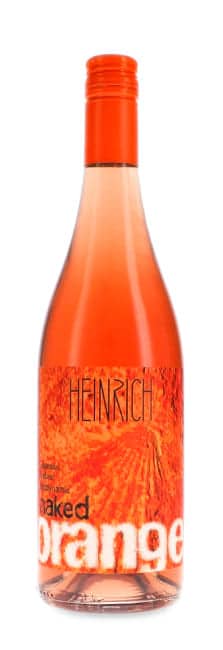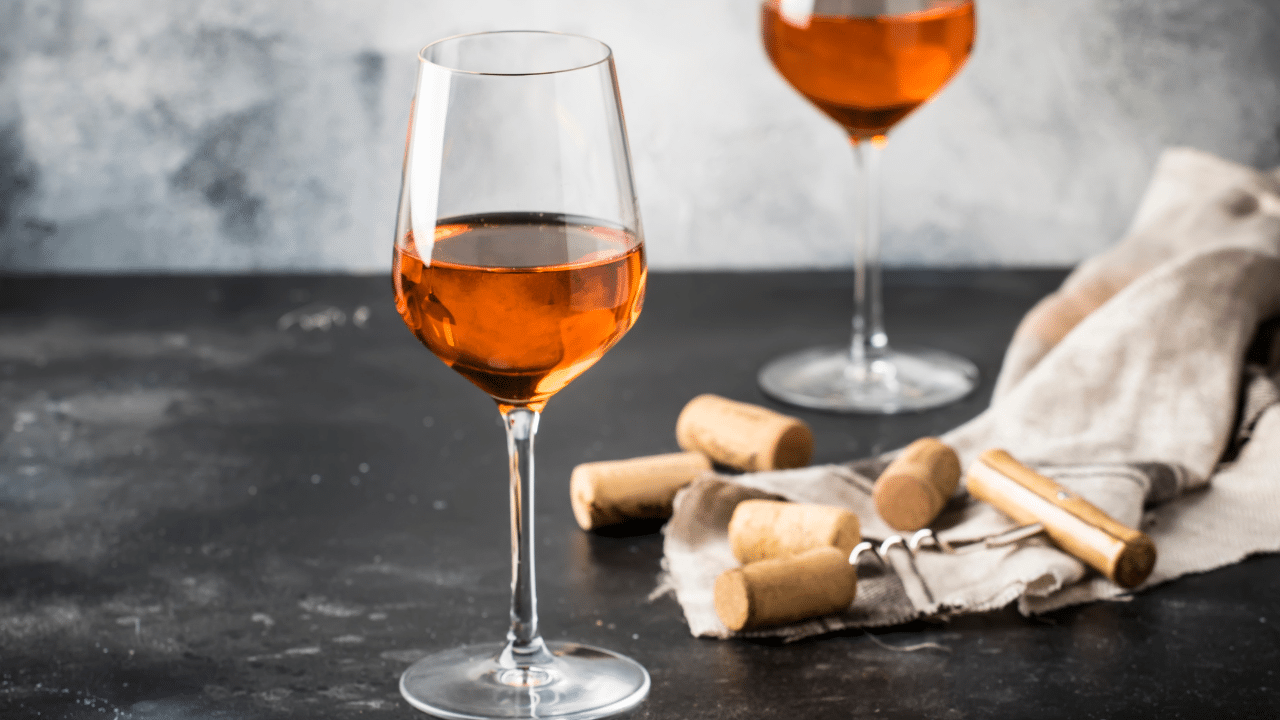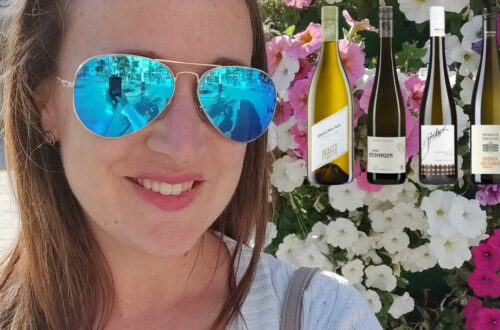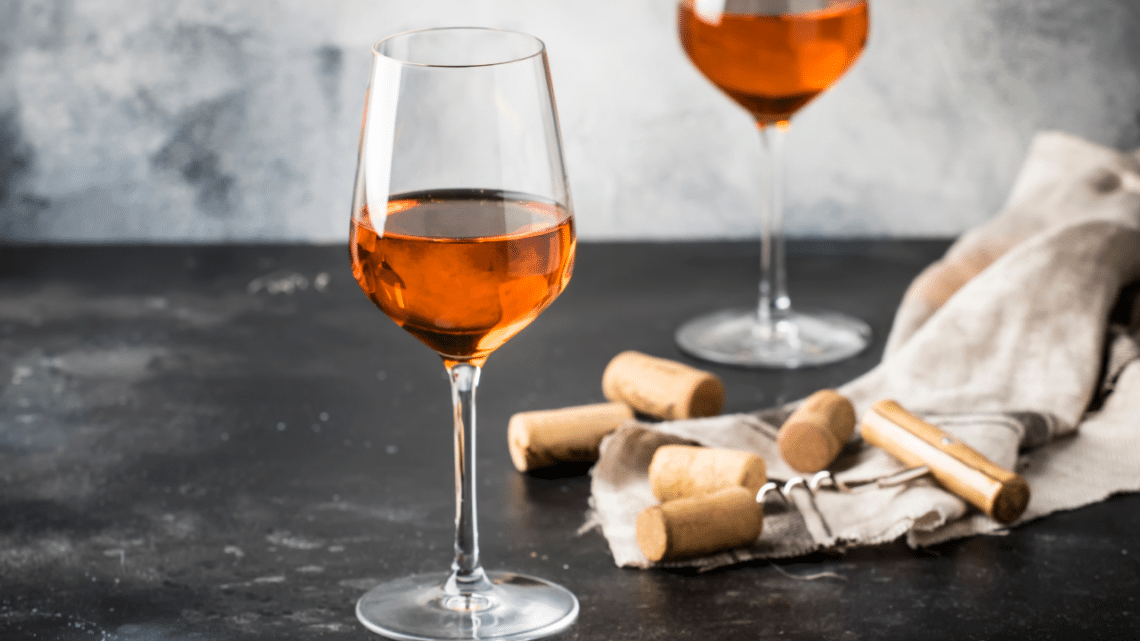
Mes recommandations de vin orange pour Halloween !
8 minutes de lecture
Pour être irremplaçable, buvez au-delà du Bordeaux.
That’s the motto around here, but let’s push it further and say : let’s drink beyond white & red wines!
No I’m not talking about rosés…
Today, we’re diving into one of the most intriguing wines you might not have tried yet: orange wine!
And since it’s Halloween, it’s all about (tricks and) treats, so let me treat you to my orange wine recommendations for 2024!
First, what is Orange Wine?
Despite what the name might suggest, orange wine isn’t made from oranges!
It’s actually a style of white wine, but with a twist.
Orange wine is created by fermenting white grapes with their skins on, similar to how red wines are made. This process is known as skin contact. It’s what gives orange wine its deep, amber hue and a flavor profile that’s like nothing else.
How is Orange Wine Made and what is the difference with rosé?
Typically, to make white wines, you quickly separate the juice from the grape skins to keep the color light and the flavors crisp.
But with orange wine, you leave the the juice to sit with the grape skins, seeds, and sometimes even stems. This allows the wine to absorb color, texture, and tannins from the skins. This skin contact can last anywhere from a few days to several months. This results in that characteristic amber or orange shade that gives the wine its name.
We can say : orange wines are the red wine version of a white wine if you wish.
What is the difference between rosé and orange wine? Well basically, rosé is done the same way…but with red grapes and for a smaller amount of time.
What Does Orange Wine Taste Like?
Imagine a crossover between a rich, structured red wine and a bright, aromatic white. The result? A wine that’s complex, with layered flavors and a bit of tannic grip—something you don’t usually find in whites.
Here are some tasting notes you might notice with orange wine:
- Fruity and Dried Fruit Flavors: Dried apricot, peach, and citrus peel are common.
- Herbal and Floral Notes: Orange wine often carries a subtle hint of herbs, chamomile, and even a slight nuttiness.
- Earthy and Savory Undertones: Thanks to the skin contact, expect a bit of earthiness or spiciness, especially in natural or biodynamic wines.
Whether you’re into crisp whites or bold reds, orange wine offers a little bit of both.
Where is Orange Wine From?
Orange wine has a long history, originating thousands of years ago in the country of Georgia (Caucasus), where winemakers still follow ancient techniques using large clay vessels called qvevri.
Over the years, its popularity blossomed, spreading to Slovenia, Italy, and eventually France, earning the title ‘Orange Wine’ in 2000—thanks to a movement started in the United States.
Today, countries like Slovenia, Italy, the US, South Africa, New Zealand, and France are all making their mark with this expressive style.
In France, for instance, regions like the Loire, Jura, and Languedoc make a lot of orange wine each with their own distinctive interpretations. Since the term ‘orange wine’ isn’t tied to specific grape varieties, any region with white grapes can venture into this fascinating world.
So, when it comes to orange wines, variety is the name of the game!
How to Pair Orange Wine
Orange wines are incredibly versatile when it comes to food pairings. Their bolder structure and tannins make them perfect for dishes that might typically pair with either red or white wine.
Here are a few pairing ideas for my orange wine recommendations:
- Cheese & Charcuterie: Orange wines love a cheese board! Try it with aged cheeses, nuts, and even a bit of charcuterie.
- Middle Eastern and Asian Cuisine: Think falafel, hummus, or curries. The complexity of orange wine holds up beautifully against bold spices.
- Autumn Flavors: Roasted root vegetables, squash, and hearty stews are amazing with the earthy tones in orange wine.
My Halloween Picks: Orange Wines to Try
Ready to try some orange wines? Just in time for Halloween, here are a few delicious orange wine recommendations available to get you started
Heinrich Naked Orange NV
First let’s go to L'Autriche, more specifically Burgenland to Heike and Gernot Heinrich’s winery. Their Naked Orange NV has a vibrant amber hue and enticing aromas of apricot and peach, balanced with a touch of spice.
This “Naked Orange” blend—35% Chardonnay, 30% Pinot Blanc, 20% Pinot Gris, 10% Traminer, and 5% Muscat—hails from vineyards across the Leitha Mountains and Parndorfer plains.
The winery works under biodynamic principles and the grapes were hand-harvested. They then underwent a two-week skin maceration, giving it this distinct, earthy character and amber hue.
Fermentation kicks off with wild yeasts, and after pressing, the wine rests in clay and oak for over a year allowing a gentle malolactic transformation. There’s no filtration—just a tiny bit of sulfur before bottling, preserving its rich, unfiltered essence.
Heinrich Naked Orange NV is very easy to pair as it goes with practially anything, such as white meats, pasta, pizza, and delicate fish dishes.
Gernot and Heike have certainly shown that orange wine deserves a stage as grand as any red. Cheers to them!
Guerila Retro Selection White 2020
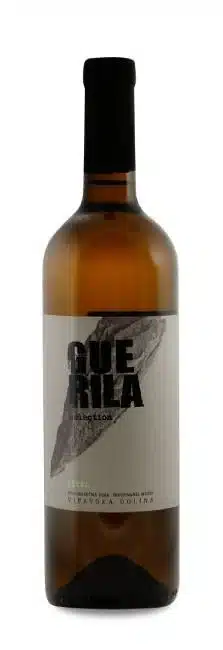
Guerila Retro Selection White 2020
Lightly aromatic with wood notes, ideal for seafood and white meats.
Son of a Slovenian farming family, Zmagoslav Petrich grew up amidst the vines and soil of the Vipava Valley, inspired by his father, a Pinella grape harvest awardee in 1956.
Establishing Guerila Wines in 2005, he brought a fresh, biodynamic philosophy to winemaking, making wines in tune with the land’s natural cycles, aided by his cellar master Martin Gruzovin.
Guerila Retro Selection White is Petrich’s radiant orange wine, a blend of native Slovenian varieties—Zelen, Pinella, Rebula, and Malvasía. Cultivated on the rich soil mix of sandstone, marl, limestone, and clay, the vineyards flourish under biodynamic principles, which Petrich believes are vital for true wine.
Following hand-harvesting and a week-long maceration, fermentation starts naturally with wild yeasts. Aged in old oak for 12 months on the lees, the wine undergoes malolactic fermentation, adding richness and depth.
Bottled unfiltered, Guerila Retro Selection White has fresh, floral notes and a striking balance of earthy complexity and bright aroma.
Iago’s Wine Chinuri
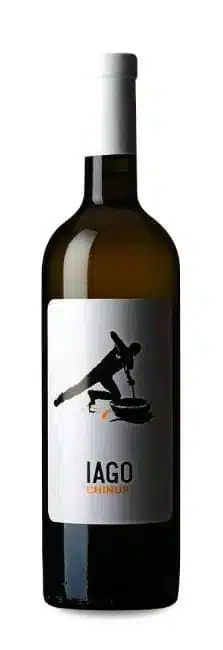
Herbaceous and earthy, offering a taste of traditional Georgian winemaking.
The Kartli region winemaker, Iago Bitarishvili, has led the revival of qvevri winemaking, a method passed down through generations, and inscribed as a UNESCO cultural heritage since 2013.
From a small community of just five producers in 2009, qvevri winemaking now hass over 80 Georgian artisans.
Made from the native Chinuri grape, Iago’s Wine is hand-harvested and produced entirely by traditional means. The grapes are crushed, stems and all, then left to ferment with natural yeasts for weeks in qvevris buried in the earth.
This ancient method infuses each wine with the surrounding soil’s energy and a delicate tannic structure that matures on fine lees for half a year.
The result is Iago’s Wine Chinuri: a golden-hued, vibrant expression of Georgia’s heritage, radiating elegance and ancestral wisdom.
Tiago Teles Raiz Branco
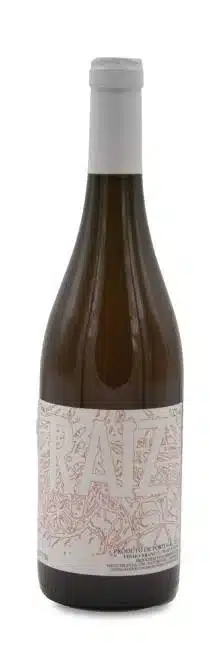
Saline and spicy with a mineral touch, reflecting the Atlantic coast.
Tiago Teles Raiz Branco is a single-varietal Loureiro orange wine that captures the essence of Portugal’s Bairrada region, made by the dedicated hands of Tiago Teles.
Though not a traditional winemaker by lineage, Teles’s connection to the land and sea led him to create wines that channel the spirit of his family’s roots near the Atlantic coast.
In 2012, he set up his vineyard 15 km from the Atlantic, planting in Bairrada’s unique clay-limestone soils. With minimal intervention and organic practices, Teles allows the land and sea to speak through his wines.
The must for Tiago Teles Raiz Branco spends two months in cement tanks, macerating on its skins and fermenting with natural yeasts. This patient approach, followed by 11 months of aging on fine lees, brings depth and texture to the wine.
Expect delicate tannins, a touch of Atlantic salinity, and soft spice. Raiz Branco balances Loureiro’s floral vibrancy with mineral notes from the soil, creating a wine that’s both refreshing and complex—perfect for savoring the distinct flavors of coastal Portugal.
Final Thoughts : my orange wine recommendations for Halloween
Orange wine is all about exploration and savoring the unexpected. Each bottle offers a unique story—a tale of a region, a winemaker’s technique, and ancient traditions brought to life. So why not pour yourself a glass and experience the adventure?
Let me know which one you picked in the comments!
After all, to be irreplaceable, you’ve got to drink beyond the classics. Cheers! 🧡
Curious to try orange wine? Grab a bottle and start your journey. Or if you’re looking for more wine tips, follow me on Instagram @wine_by_mademoiselle.



